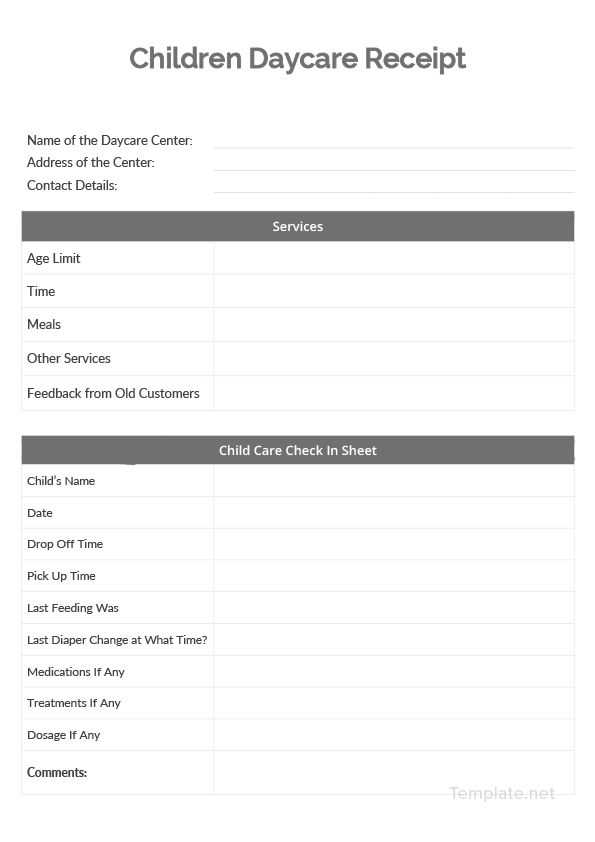
If you are providing childcare services, having a well-organized receipt template is key to ensuring clear documentation for both you and the families you serve. A childcare receipt helps parents keep track of payments and can also be used for tax purposes. Make sure your template includes all necessary details such as the provider’s name, address, the amount paid, and the date of service.
When designing your template, consider adding spaces for important information like the number of hours worked, the type of service provided (e.g., hourly care, full day care), and any special notes about the care provided during that period. A clear and professional format will ensure both parties understand the transaction and make it easier for parents to reference in the future.
Customize your receipt to fit your specific needs. For example, include fields for extra charges such as transportation or meal fees, if applicable. By keeping your template simple yet thorough, you ensure that both your clients and your records remain well-organized.
Childcare Receipt Template: A Practical Guide
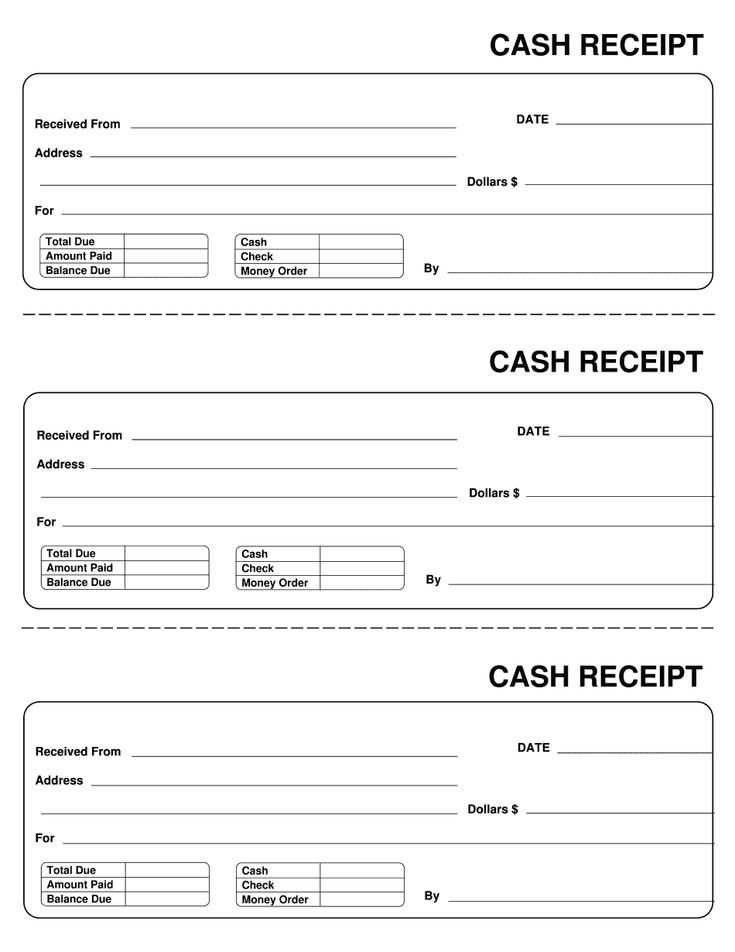
To create a clear and functional childcare receipt, start with the basics: date, amount paid, and a detailed description of services. Include the provider’s name, business name (if applicable), and contact details for easy verification. This ensures transparency and accountability for both parties.
For the amount paid, list the exact sum received, including the currency. If the payment covers multiple sessions or a package, break down the total into individual amounts, specifying the number of hours or sessions provided.
Specify the services rendered in detail. Mention whether the payment is for babysitting, daycare, or other childcare services. If applicable, include any extra services such as transportation, meals, or supplies provided during the care period.
Clearly state the payment method (cash, check, or online transfer) for clarity. If any discounts, taxes, or additional fees apply, note them separately to avoid confusion later.
Finally, include a statement at the bottom to confirm that the receipt is accurate and signed by the provider. This adds a layer of professionalism and security to the transaction.
Creating a Simple and Clear Template
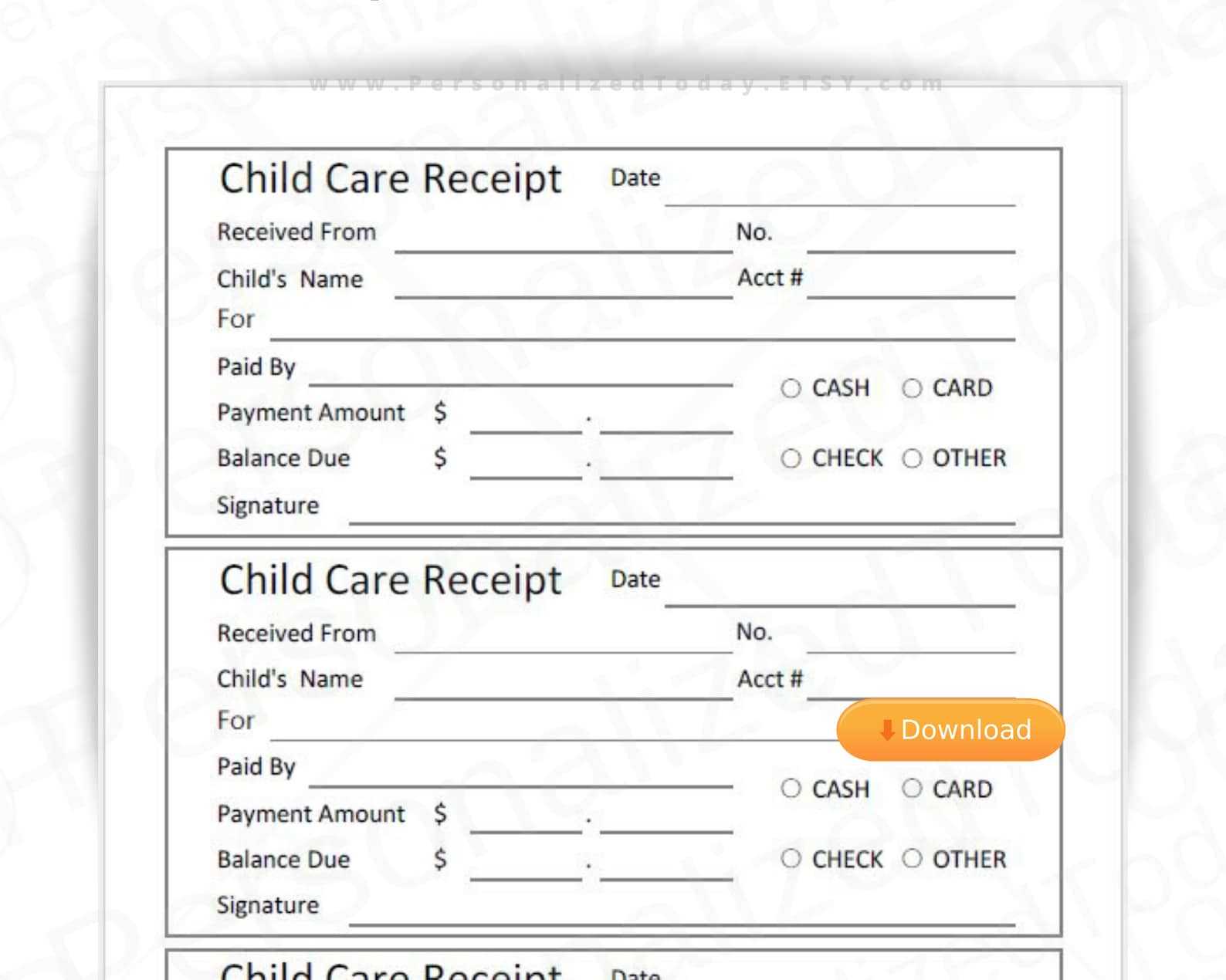
Keep the design minimal and straightforward to make the receipt easy to read. Include only the necessary fields for clarity and avoid cluttering the template with irrelevant details.
- Title: Clearly label the document as a “Childcare Receipt” at the top to ensure its purpose is immediately apparent.
- Date: Include the exact date of service to provide accurate records. Use a format that’s easy to read, like DD/MM/YYYY.
- Provider Information: List the childcare provider’s name, address, and contact details. Keep this section simple, with no unnecessary information.
- Recipient Information: Add the name of the person receiving the service (e.g., parent or guardian) and their contact information if required.
- Details of Service: Specify the dates of service, hours worked, and any special services provided. Make it clear and concise.
- Total Amount: Clearly indicate the total amount due, followed by a breakdown of charges if needed (e.g., hourly rate, discounts, etc.).
- Payment Method: Specify how payment was made (e.g., cash, check, or bank transfer). This ensures transparency.
Use a simple font and enough spacing between sections for easy readability. Consider leaving room for any additional notes or signatures if required, but keep this section clean.
How to Include Necessary Information on a Receipt
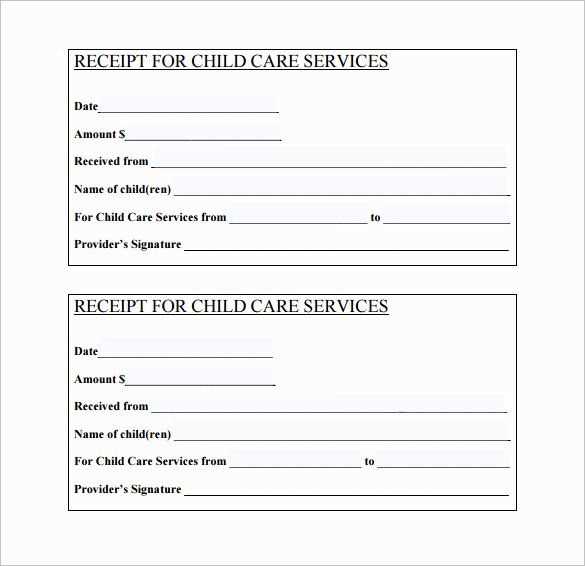
Begin with the name and contact details of your childcare service. This should include the business name, address, phone number, and email address. Make sure the contact information is clear and easy to find for clients needing assistance or clarification.
Next, list the services provided. Specify the type of care, such as full-day, half-day, or after-school programs. Include the exact dates of service to avoid any confusion. For recurring services, note the frequency, such as weekly or monthly.
Include the total amount paid, broken down into categories if needed. This may include daily rates, extra fees for extended hours, or any additional services offered. Display the payment method, whether by cash, check, or credit card.
For transparency, note any applicable taxes, discounts, or promotional offers. This helps the client verify that they are being charged correctly and allows for a clear understanding of the final total.
Finally, provide a receipt number or unique reference. This will help both you and your client track payments for future reference or accounting purposes.
Customizing the Template for Different Childcare Services
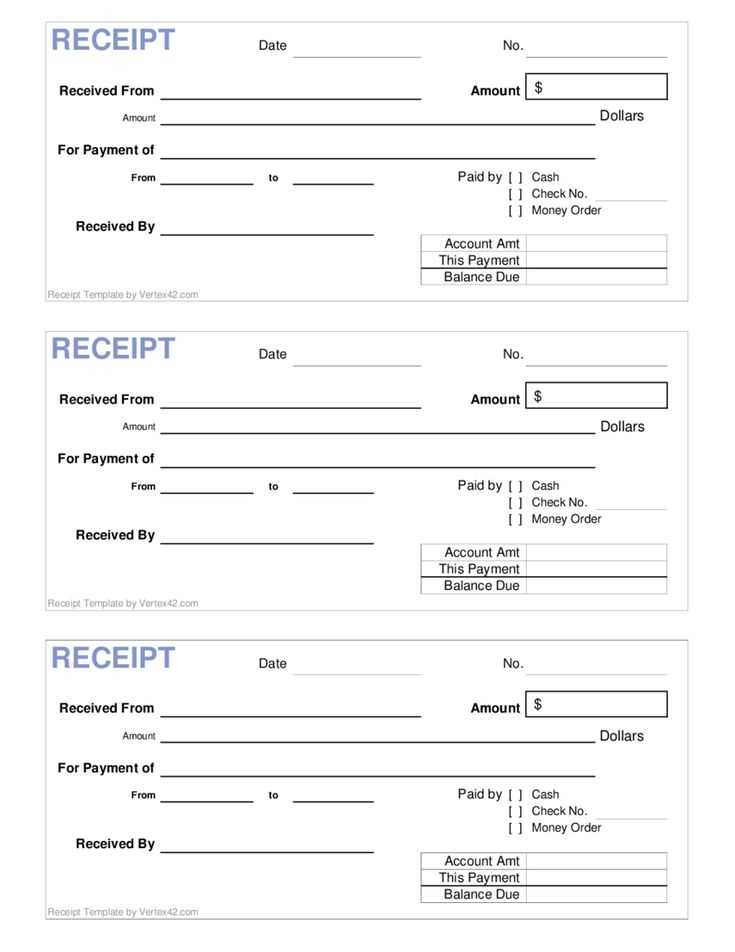
Adjust the childcare receipt template to match the specific services you offer. For instance, if you provide extended hours, clearly list the start and end times for each session. Include a section for hourly rates, along with any discounts for multiple children or long-term bookings. Customize the service description based on the type of care provided–whether it’s after-school programs, overnight stays, or drop-in services.
Including Detailed Pricing for Various Services
To avoid confusion, break down pricing into categories. If you offer additional services, such as meals, activities, or transportation, create separate line items for each. This will allow clients to see exactly what they are being charged for and help ensure transparency.
Adding Client-Specific Information

Include a space for noting important details, such as allergies or special requests, that may be relevant to the service. This will help personalize the receipt for each client and keep the information organized. Adding a client ID or reference number also helps streamline future bookings.


